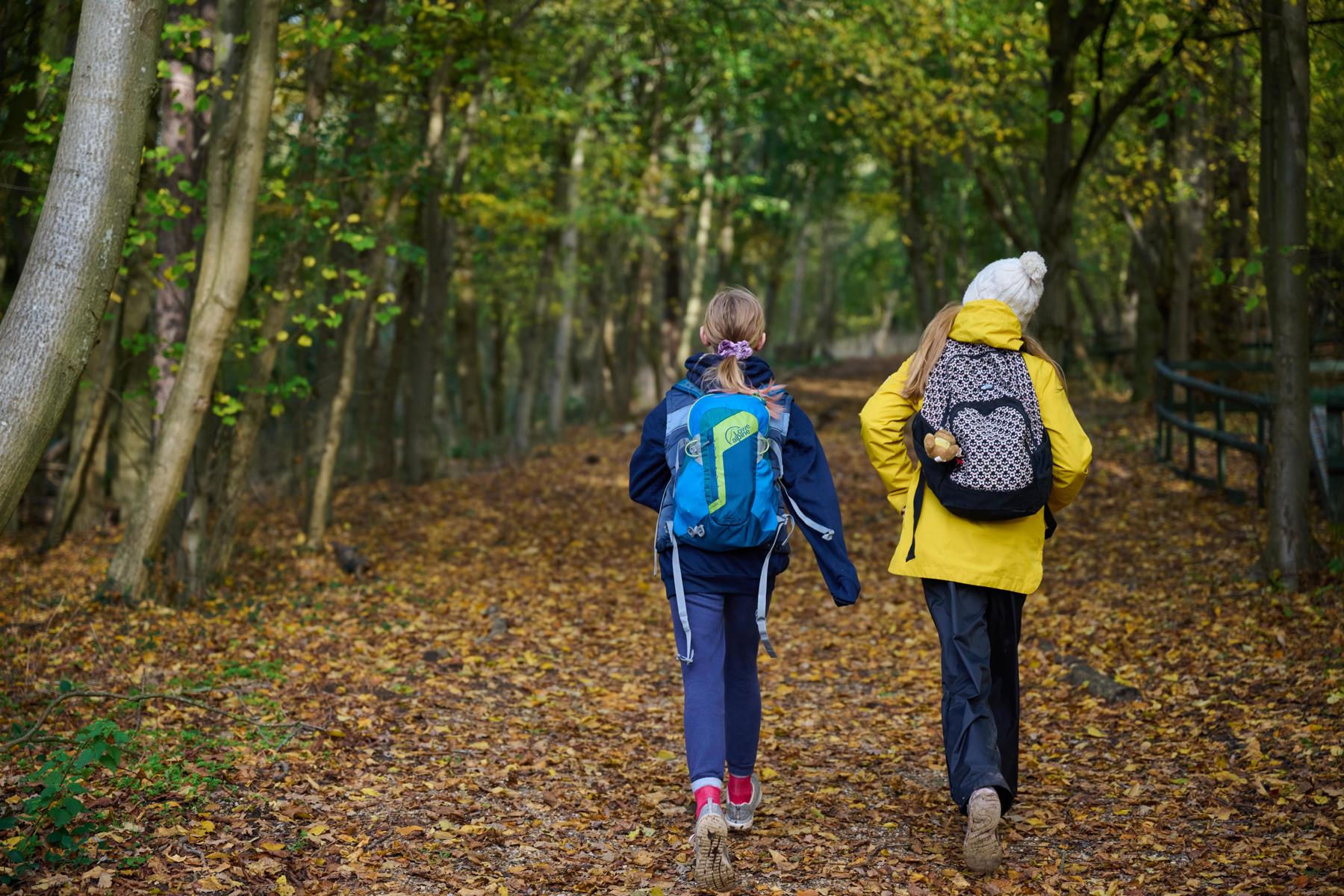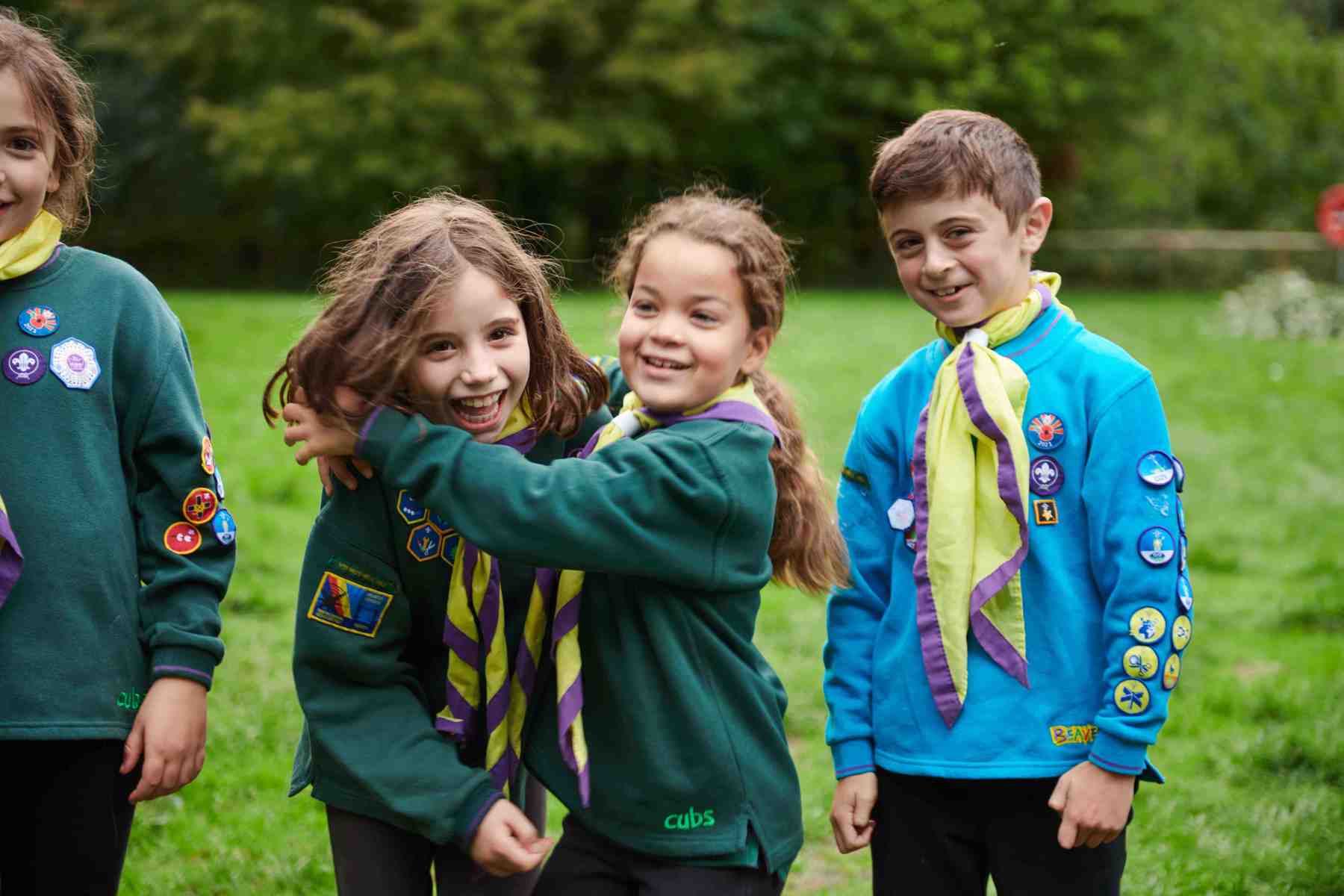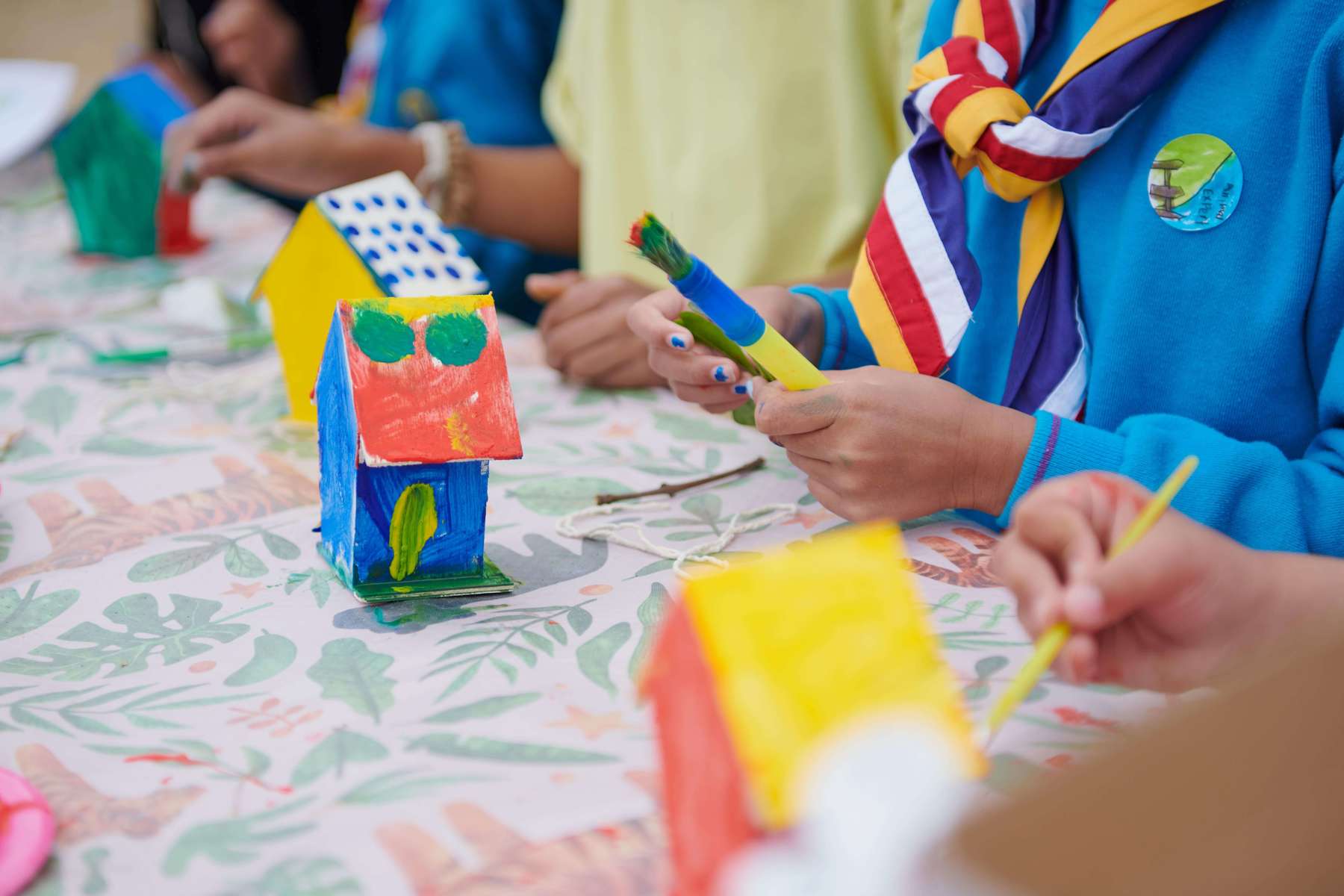8 mindfulness activities to do this World Mental Health Day
10 October is World Mental Health Day, so here’s a list of our favourite activities to help us look after our mental health and wellbeing.
At Scouts, we know looking after our mental health is just as important as looking after, and getting help for, our physical health.
Paying attention to how you, and others, are feeling is something we could all do a little more.
We’ve come up with some activities to raise awareness for and support our mental health and wellbeing, but these activities aren’t just for World Mental Health Day. We can practice mindfulness all year round, make time to regularly talk about mental health, and take part in activities that improve our wellbeing.
You can use these activities throughout your yearly programme, as you never know when someone may need extra support.

Craft activities
Some people might find being creative is the perfect way to relax and destress, so why not plan these arty activities into your programme?
Create a Breathing buddy, made from a paper cup and tissue paper.
The breathing buddy is designed to help young people feel calmer by focusing and relaxing their breathing.
The tissue paper inside the cup will gently wave when young people exhale through the cup.
During your session, you can make and decorate the craft, and then try different breathing techniques to help young people practice mindfulness.
Don’t forget to take your breathing buddies with you, so you can continue practising at home.
In our activity, Build a wellbeing box, you’ll make an uplifting gift that Scouts can give to themselves. It’ll be full of items and messages that’ll make them smile when they need them most for when they need little boost of happiness.
It's a great crafting activity to do with your group, allowing people to design the boxes. They can then add in things that’ll make them feel happy or relaxed, either at home or at Scouts.
Fill, decorate and design your boxes during the session. You could add in messages, write down jokes or motivational quotes, or draw pictures of your favourite things.
Then, once everyone’s finished making their boxes, you could ask if anyone wants to talk through some of the items they’ve decided to include. It’s OK if people want to keep all, or some things, in their boxes private, too.
In Wellbeing wheels, you’ll be making a large spinning wheel. Use it for inspiring ourselves, or our loved ones, to try new wellbeing activities.
You could make a smaller wellbeing wheel each, or one large wheel for the whole group to use during your weekly meetings.
Think of different activities your group could try to help boost their wellbeing and include these on your wheels - there are lots of ways to look after ourselves!
For example, you might suggest swimming in the sea, baking, riding a bike, watching films, going to the park, playing with pets, or reading.
Making a note of nice things that happen to us, things that make us feel good and things we’ve done to be kind, can be really uplifting to look back on.
In our Weekly wins activity, you can make, or reuse, your very own diary and fill it with lots of positive thoughts.
A weekly win is something that makes us feel good. With your group, decide how many weeks to keep your diaries for.
Everyone should make and take their diaries home to fill out. People can keep decorating them at home too, if they’d like.
At your weekly sessions, take it in turns to share any weekly wins, but only if people are happy and comfortable too.
It’s OK if people want to keep all or some things in their diary private.

Mindfulness activities
If you’d prefer to get outdoors, connect with nature and try some new hobbies to practice mindfulness, then why not attempt some of these activities? We guarantee they’ll get you feeling in touch with your emotions.
Our Gratitude scavenger hunt will help you appreciate all the little things in the world around us.
In this activity, your group will be exploring either the indoors or the outdoors, and finding objects which they’re grateful or thankful for.
Some examples could be things that make them happy, remind them of someone they love, something beautiful in nature, something that reminds them of their favourite song, inspires them, feels nice to touch, or something they’ve never seen before.
To reflect on this activity, get into smaller groups and chat about three or four of the items they chose and why. This should help your group to feel more thankful and appreciative of their surroundings.
Why not give our Switch off challenge a go?
Our screen time can impact on our mental health and wellbeing, as it can take us away from other things we enjoy, such as spending time outdoors or playing with friends.
It can also mean we don’t live as healthily as we could, such as by straining our eyes or sleeping later than we should.
Using screens and technology is a great way to communicate and socialise with friends.
We can learn by researching, studying or watching tutorials, or we can buy things online and support small businesses.
We can watch films or shows and be entertained, or we can be creative by making art, writing, reading or editing.
But, it’s important to balance screen time with other offline activities, such as playing sports, taking part in hobbies, being outdoors and spending time with people in person.
In this activity, challenge your Scouts to see if they can achieve a healthier balance between their screen time and non-screen time.
You could suggest, if people have their own phone or tablet, setting screen time limits or monitoring their own screen time with an app. For example, some smartphones have a built-in feature that measures your screen time for you. People could also use night or wind down modes or set time limits on certain apps.
The main aim of the challenge is for every hour people spend on screens, they should also spend an hour doing something without screens and offline.
Hopefully, this’ll motivate your Scouts to step away from their screens more in the future.
Remember, not everyone will have access to all of the different screened devices, or to the same outdoor spaces or screen-free time activities. Try to help people find things that work for them.
It’s important that any digital support or screens used for accessibility shouldn’t count as ‘screen time’. You could discuss how technology and devices can be great for accessibility.
A mindfulness walk gets your group outdoors, connected with nature and feeling great. All you need is a peaceful, accessible place to walk.
Mindfulness is all about paying attention to the moment in a non-judgmental way. It can help people connect to their bodies and can also reduce stress.
On your walk, try and make time to take part in some relaxing activities.
The ideas could be based around our SCOUT mindfulness walk activity acronym:
S: Scenery - Find a spot to sit with an interesting view and paint, draw or doodle what you can see. If the weather’s not great, you could take a photo or make a quick sketch to finish off at home.
C: Collect - As you walk, collect natural items you could use to create some arts or crafts to remind you of your mindfulness walk. Avoid picking anything up unless you’re sure it’s safe, which you could check with a trusted adult, and avoid taking anything from living plants. Remember to leave shells, pebbles, anything on a beach and acorns where you’ve found them.
O: Offline - Phones are great, and they’re important to have on a walk in case there’s an emergency. However, phones can also stop us paying attention to the world around us. Try to walk a section of the route without using phones or any other technology with screens. Does it feel different? Find a place to stop for a few moments. Be totally still and silent and watch the world go by – did you see anything you’d have missed if you were rushing past or looking at a screen?
U: Unwind - As you walk, spend some time enjoying each other’s company. Chat with your friends, find a space for some basic yoga poses or share some things that made you smile recently.
T: Textures - During the walk, take the time to notice the different textures around you. How does the ground feel underneath your feet? Is it hard or soft? Are the lumps and bumps? What sound do you make when you move? Can you feel the crunch of a leaf or the smoothness of a stone?
At the end of the walk, everyone should think about which activities helped them relax and feel connected to the world around them. Could they fit any of the things they did into their day-to-day lives?
Happy or sad is a simple and quick activity you can fit into your weekly sessions to help people learn about, and check in, with their feelings and emotions.
All you need to do is make some signs for young people to hold up to represent happy or sad, then read out some scenarios.
After listening to the example, people will hold up their signs to show if the scenario would make them happy or sad.
Some examples of scenarios could be:
- You get to go to the beach
- You’re eating your favourite food
- Your brother eats all the biscuits and you don’t get one
- It’s too dark at night in your bedroom and there are lots of scary noises
- You win a race on sports day
- There’s loud thunder and lightning outside
- Someone in your class says you can’t join in the game
- You saw a cute dog on the way home from school
- Someone took your favourite pencil without asking
- Your favourite teddy bear is lost
- You’re going to Scouts tonight
Afterwards, you can discuss where your young people go for support when they’re feeling sad, angry, worried, scared or nervous.
Encourage everyone to speak to a family member, someone they live with, a friend, an adult at Scouts, a teacher, or someone else they trust if they feel sad, so the person can help them.

Guidance when talking about mental health
If a young person opens up to you about a mental health issue, give them space to talk and always follow the Yellow Card. It’s OK if you’re not sure on all the answers – you can still listen and check in.
If anyone’s struggling with their mental health, worried about someone else, or wants to find out more about mental health, they should talk to a trusted adult, a GP or charities and organisations. Childline and the NSPCC have lots of support and guidance.
When taking part in activities at Scouts, young people may make a disclosure about their mental health or say something else that could be a safeguarding risk.
In line with our safeguarding policies, if you're concerned a young person is at risk of harm from themselves (or others), you'll need to pass this information on.
Make sure you agree with the young person on how you’ll let their parents or carers know – you might do it yourself directly or support the young person to do so.
Always follow the Yellow Card.
Mental health can be a sensitive topic and affects people in lots of different ways.
- Always make sure you look out for each other (both volunteers and young people) and keep an eye on signs someone may not be feeling right. Scouts should always be a safe and calm space to process emotions.
- Some people find it hard to talk about mental health and wellbeing, or they might be experiencing mental health problems, so an activity may be difficult for them. Being open and gently encouraging conversations in Scouts helps make mental health an everyday topic that young people and adults can become more comfortable talking about.
- Remind everyone that positive wellbeing activities can’t always make mental health problems better. This isn’t anybody’s fault, and it’s always OK to need some more support for mental health problems.
- Always let everyone know about the session beforehand to give people a chance to prepare or talk about it. This could be especially useful for anyone who’s less confident or may be worried about it.
- Regularly check before and during the activity that everyone’s comfortable, and make sure everyone knows they can leave the activity at any point. It might be useful to agree a signal people can use, such as raising their hand, to take a break from the activity.
- If anyone doesn’t want to try any of the activities, that’s OK. Mindfulness is an individual practice and different people find focus and peace in different ways.
- Tell everyone to create a safe space for mental health in Scouts. Encourage everyone to work together, be non-judgmental, respect each other and listen to each other during mental health activities. People will need to be understanding and supportive, especially if someone’s choosing to share their personal experiences.
- Remember, no one needs to share their thoughts, personal experiences or feelings if they feel uncomfortable or don’t want to. People can still chat about their wellbeing and things that help on a day-to-day basis.